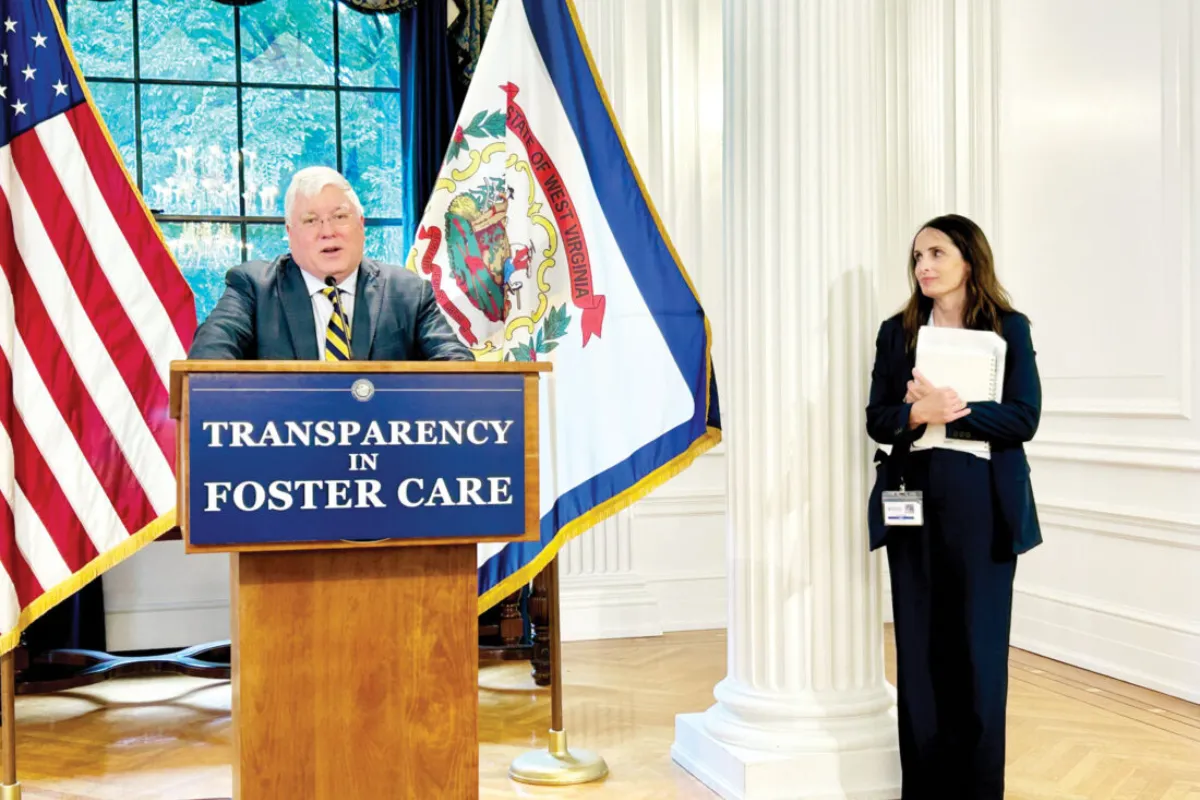West Virginia Governor Patrick Morrisey is promising long-overdue changes to the state’s foster care and child protection system. At a press conference held Wednesday in the Governor’s Reception Room at the Capitol, Morrisey acknowledged that while problems have existed for years, the time for action is now.
“We can’t tolerate failure when it comes to protecting children,” Morrisey said. “These issues have gone on for too long, and it’s always the kids who suffer. We have to do better.”
Morrisey announced six major steps his administration and the Department of Human Services (DoHS) are taking to bring more transparency, accountability, and support to Child Protective Services (CPS) and the foster care system.
Step 1: Greater Transparency in Child Fatality Cases
In the wake of public outcry over the death of 14-year-old Kyneddi Miller in Boone County — a child found in a skeletal state after years of malnutrition — Morrisey pledged to release more information in cases involving child fatalities or near-deaths due to abuse or neglect.
Under this new policy, the public will be able to request details like the child’s age, sex, cause of death, and any prior involvement with CPS. This marks a major shift from the previous administration’s refusal to disclose such information, even after media inquiries and Freedom of Information Act (FOIA) requests.
“There is no excuse for hiding these tragedies from the public,” Morrisey said. “We’re going to be as transparent as the law allows, because West Virginians deserve to know the truth.”
Step 2: A Revamped Child Welfare Dashboard
To make data more accessible and understandable, the Child Welfare Dashboard on the DoHS website is getting a complete overhaul. The updated version will offer interactive features and monthly as well as annual data trends, helping families and advocates see what’s really happening in the system.
Step 3: Improved Training for CPS Supervisors
More than 570 CPS supervisors will receive new leadership training that focuses on documentation, accountability, and employee engagement. Supervisors will also be required to conduct monthly reviews of the cases they oversee.
Lorie Bragg, the newly appointed commissioner of the Bureau for Social Services, said feedback from the initial training sessions has been positive. “People are feeling more supported and prepared,” she said.
Step 4: New Critical Incident Review Team
The state will launch a dedicated team to investigate every child fatality or near-fatality involving someone in the child welfare system. This team, required by House Bill 2880, will review each case and recommend steps to help prevent similar tragedies in the future.
Step 5: A New CPS Practice Model
Morrisey’s plan includes the development of a comprehensive practice model to strengthen how CPS handles intake, investigations, and services. The goal is to create consistency and raise the quality of decision-making across the board.
Step 6: Better Information Gathering for CPS Referrals
Finally, CPS workers will be given more authority to gather details from relevant sources when a new case is referred to the department. Instead of relying solely on the referral report, caseworkers can now seek out additional information to help determine whether a case should be formally investigated.
“This is about giving our employees the tools they need to make better decisions,” Morrisey said.
A Turning Point for West Virginia’s Child Welfare System
Morrisey emphasized that these steps are just the beginning. “We are committed to changing the culture of child welfare in West Virginia,” he said. “This isn’t about politics — it’s about protecting the most vulnerable among us.”
With these reforms, Morrisey hopes to turn the page on a troubled chapter in the state’s child protection history and build a system that puts children’s safety first.















